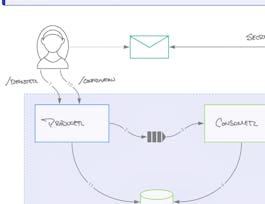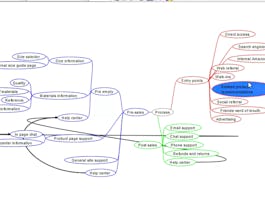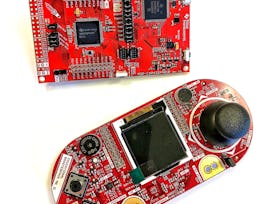Based on an understanding of architectural styles, you will review architectures for web applications, then explore the basics of Service-Oriented Architecture (SOA) in two approaches: Web Services (WS*) and Representational State Transfer (REST) architecture.



Service-Oriented Architecture
This course is part of Software Design and Architecture Specialization

Instructor: Kenny Wong
Sponsored by Taipei Medical University [C4CB]
52,699 already enrolled
(572 reviews)
Skills you'll gain
Details to know

Add to your LinkedIn profile
4 assignments
See how employees at top companies are mastering in-demand skills

Build your subject-matter expertise
- Learn new concepts from industry experts
- Gain a foundational understanding of a subject or tool
- Develop job-relevant skills with hands-on projects
- Earn a shareable career certificate


Earn a career certificate
Add this credential to your LinkedIn profile, resume, or CV
Share it on social media and in your performance review

There are 4 modules in this course
In this module, we will introduce you to service-oriented architectures and their basic principles. Then, you will get a crash course on the technologies that underpin the Web, so that you are ready to learn about web services in the next module. This module also covers some earlier precursors of service-oriented architecture.
What's included
9 videos5 readings1 assignment
WS*-style web services are a "first generation" group of specifications that work together to allow developers to develop and use web services. They are all based on XML. In this module you will learn some of the most important specifications of WS*-style web services: SOAP, WSDL, UDDI, and BPEL.
What's included
5 videos3 readings1 assignment1 peer review
RESTful web services are another style of web services based on lightweight HTTP methods. They have largely superseded WS*-style services because of their relative simplicity. In this module, you will learn about RESTful services and how to design them. You will also learn a bit about microservices, a software architecture for applications that is based on services.
What's included
3 videos2 readings1 assignment1 peer review
In the previous modules, you determined an Android application’s information needs when storing data remotely. Now, in the final module of the course, you will fully connect the application to a remote Elasticsearch server to allow users to share information across their devices. After completing this task, you will be ready to complete the final exam.
What's included
3 readings1 assignment1 peer review
Instructor

Offered by
Why people choose Coursera for their career




Learner reviews
572 reviews
- 5 stars
67.36%
- 4 stars
21.46%
- 3 stars
7.50%
- 2 stars
1.22%
- 1 star
2.44%
Showing 3 of 572
Reviewed on May 3, 2020
I enjoyed being part of the course. Hats-off to the online mentors and educators around the globe who are helping this far to help us in making progress to our careers. Thank You!!
Reviewed on Feb 2, 2021
I loved the way this course had very little obvious tricks to get answers wrong, but really tested the students understanding of the topic they are being examined on
Reviewed on Aug 3, 2019
Amazing explanation and examples to help understand each concept. Really glad to enroll in this course. I am more knowledgable now than I was.
Recommended if you're interested in Computer Science

University of Colorado Boulder

Coursera Project Network

University of Colorado Boulder

Open new doors with Coursera Plus
Unlimited access to 10,000+ world-class courses, hands-on projects, and job-ready certificate programs - all included in your subscription
Advance your career with an online degree
Earn a degree from world-class universities - 100% online
Join over 3,400 global companies that choose Coursera for Business
Upskill your employees to excel in the digital economy


